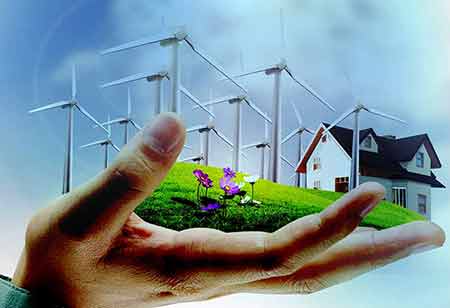Thank you for Subscribing to Energy Business Review Weekly Brief
Cybersecurity In Distributed Energy Resources To Give Greater Focus
DERs pose an exceptional challenge for the utility sector from the point of cybersecurity.

By
Energy Business Review | Tuesday, May 03, 2022
Stay ahead of the industry with exclusive feature stories on the top companies, expert insights and the latest news delivered straight to your inbox. Subscribe today.
The installation of DERs, however simple it might be, causes a severe risk in terms of cybersecurity. What questions must be asked before installation, and how to deal with them?
FREMONT, CA: The energy transition is sparking toward enhancingDistributed Energy Resources (DERs). DERs usually comprise small power generation resources that provide energy wherever necessary and are generally stationed nearer to the consumer. DERs consists of rooftop solar photovoltaic panels, electric vehicles and chargers, wind turbines, combined heating and power (CHP) systems, and energy storage.
DERs pose an exceptional challenge for the utility sector from the point of cybersecurity. So since the electricity grid operators are connected to DERs, a single provider may not often control it or encourage it with the necessary features. As a result, the phenomenon can pose a severe risk to the DERs and the electricity provider.
Asking the Right Questions:
To control power grids among assets, networks of energy systems are connected to millions of devices. A significant criterion is an IEEE-1547 standard with a set of instructions meant to be abided. The crucial factors that need to be considered before the connection are: How are the devices controlled? Who is controlling it? What are the protocols that are required to be followed? And which network is to be selected for execution? The most pressing question is whether the DERs can be implemented securely and without damage.
An Important Responsibility:
Continuous disturbances in the electricity network pose a serious risk and impact directly on the lives and livelihood of the people. Therefore, it is essential to understand the utility's unique industrial control systems (ICS) environment for securing the electricity network. It is not a simple responsibility of the services to integrate DERs securely. They must acquire detailed insights to conduct the integration safely and securely to install the systems. These insights are obtained from the installation partners building newer DERs systems like heat pump installations, solar parks, and micro CHP systems.
Currently, the DERs depict most of the portion available for generation capacities. The damage that occurs due to insecure IoT devices can compromise millions of assets in operational technology (OT) networks but also raises the specter of impact on the communities.






